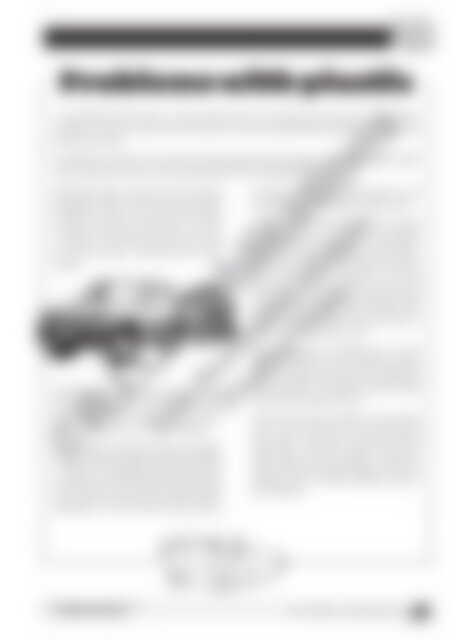RIC-20213 Primary Writing Year 5 – Reports
Create successful ePaper yourself
Turn your PDF publications into a flip-book with our unique Google optimized e-Paper software.
Report 1<br />
Problems with plastic<br />
It is estimated that 500 billion to 1 trillion plastic bags are now made and used each year. Waste plastic,<br />
particularly in the form of used plastic shopping bags, causes immense problems worldwide for both land and<br />
marine environments.<br />
The problems they cause in the environment include blocking drainage systems, creating litter, adding to landfi ll<br />
waste, choking marine life and consuming energy during the manufacturing process.<br />
Most plastic bags are made from high density<br />
polyethylene (HDPE). HDPE is made from liquefi ed<br />
petroleum gas (LPG). The amount of LPG needed<br />
to make one plastic bag would drive a car about<br />
100 metres. An enormous amount of LPG is used<br />
to make the amount of plastic bags the world<br />
requires.<br />
Plastic bags decompose at a very slow rate, ranging<br />
from 20 to 1000 years. This means that plastic<br />
bags are continuing to accumulate. They may be<br />
reused or recycled, but are not being destroyed.<br />
On land, plastic bags block drains and gutters,<br />
stopping the fl ow of rainwater and sewage, resulting<br />
in pollution and threatening natural environments.<br />
Land animals can eat or become trapped in plastic<br />
bags. When the animals die, their bodies naturally<br />
decompose at a much quicker rate than the bag.<br />
The plastic the animal swallowed remains in the<br />
environment to be swallowed by another animal.<br />
Scientists believe more than 100 000 marine<br />
mammals such as seals, whales and dolphins<br />
die each year after being tangled in waste plastic.<br />
The plastic becomes twisted around the animals’<br />
limbs or fi ns, cutting into their fl esh. This slows<br />
them down so they fi nd it diffi cult to catch or eat<br />
food and makes them easy prey. Turtles are thought<br />
to mistake fl oating plastic bags for jellyfi sh, their<br />
favourite food. The plastic can choke the turtle or<br />
block its stomach so it can not eat.<br />
Birds are attracted to the bright colour of some<br />
plastics and eat them. This can choke or poison the<br />
birds. Dead chicks have been found to have plastic<br />
in their stomachs. The parents had been feeding<br />
them what they thought was food.<br />
People can help solve this problem in the following<br />
ways. They can reduce the use of plastic bags by<br />
©R.I.C. Publications<br />
Low Resolution Images<br />
Display Copy<br />
using paper or cloth bags, and reuse and recycle<br />
plastic bags as much as possible. People also<br />
need to remember that plastic bags put in bins will<br />
eventually end up in landfi ll, potentially at large in<br />
the environment.<br />
PRIMARY WRITING<br />
R.I.C. Publications<br />
www.ricgroup.com.au<br />
39


















